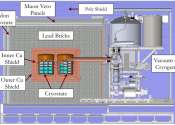Physicists explain puzzling particle collisions
An anomaly spotted at the Large Hadron Collider has prompted scientists to reconsider a mathematical description of the underlying physics. By considering two forces that are distinct in everyday life but unified under extreme ...









